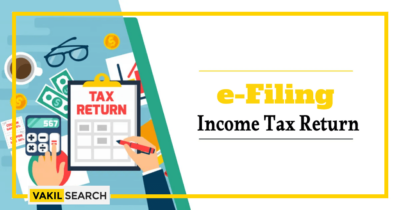Indian Income Tax Slabs for the year 2022 to 2023: Find out the new rates of income tax in India.
Overview
An income tax slab for is a tax levied by the government on individuals or entities (companies and trusts) that earn income from various sources. The tax is levied on the total income of the taxpayer, minus any deductions and exemptions.
Income tax is typically progressive, meaning that higher earners pay a higher rate of tax. The rate of tax increases as the taxpayer’s income increases. There are different income tax brackets in India for different levels of income.
Those with an annual income of ₹ 5-10 lakh are in the third bracket, and they are liable for a tax rate of 30%. Finally, those with an annual income of more than ₹ 10 lakh are in the fourth bracket and they are liable for a tax rate of 40%.
There are also some additional taxes that apply to certain taxpayers. For example, those who earn income from dividends are liable for a dividend distribution tax (DDT) at a rate
Rules and Regulations on Income Tax Slabs in India
- The Income Tax return in India is a tax levied on the income of individuals and entities. The Income Tax Act, of 1961 governs the levy, collection, and recovery of income tax.
- In India, there are different income tax slabs for different categories of taxpayers. The tax slab for an individual taxpayer may also vary depending on their age and gender.
- The Income Tax Act provides for various deductions and exemptions from taxes. These deductions and exemptions are available for certain categories of taxpayers such as senior citizens, women taxpayers, farmers, etc.
- The Income Tax Department is responsible for the assessment and collection of income tax in India. The department has a network of offices across the country to administer income tax for pensioners
Taxable and Non-taxable Income
There are two types of income in India – taxable and non-taxable. Taxable income is subject to income tax, while non-taxable income is not.
Income from salaries, wages, commissions, bonuses, tips, pensions, and rents is taxable. Income from interests, dividends, and capital gains is also taxable. However, there are some exceptions. For example, interest on certain government bonds is exempt from taxation.
Sources of Taxable Income Include Lottery Winnings and Gifts.
Self Assessment of Income Tax in India
In India, individuals who earn income from salaries, pensions, interest, dividends, and other sources are required to file an annual self-assessment tax return. This return must be filed by the due date, which is usually 31 July.
Individuals who are residents of India are taxed on their global income. This means that income earned from sources outside of India is also subject to Direct Tax in India. Non-residents are only taxed on income earned from Indian sources.
The Income Tax Act of 1961 lays out the Income Tax Slabs for both residents and non-residents. The slabs for residents are as follows:
- Income up to ₹2.5 lakhs – No tax
- Income between ₹2.5 lakhs and ₹5 lakhs – 5% tax
- Income between ₹5 lakhs and ₹10 lakhs – 20% tax
- Income above ₹10 lakhs – 30% tax
For non-residents, the Income Tax Slabs are as follows:
Income up to ₹2.5 lakhs – No tax
Income between ₹2.5 lakhs and ₹5 lakhs – 10% tax
Precision in every calculation – our Income Tax Calculator guarantees financial accuracy.
Introduction to Slabs
In India, income tax is levied on individuals, Hindu Undivided Families, companies, firms, and any other legal entity. The Income Tax Act of 1961 governs the levy, collection, and recovery of income tax in India. The Income Tax Department is responsible for the administration of income tax in India.
Income tax is imposed on the total income of an individual. Income from salary, business or profession, capital gains, and other sources are included in the total income. Income from agriculture is exempt from tax.
The Income Tax Act provides for different tax rates for different categories of taxpayers. Individuals are divided into three categories for taxation purposes – men, women, and senior citizens. The tax rates for these categories are different. Companies are also taxed at different rates depending on their turnover.
What Are the Slabs for the Years 2022 to 2023?
- Income Tax Slab for Individual Taxpayers & HUFs (Less than 60 Years Old)
- Income up to ₹2,50,000-No tax is payable
- Income between ₹2,50,001 to ₹5,00,000-5% of total income exceeding ₹2,50,000
- Income between ₹5,00,001 to ₹10,00,000-20% of total income exceeding ₹5 lakh
- Income Tax Slab for Individual Taxpayers & HUFs (Above 60 Years Old)
- Income up to ₹3,00,000- No tax is payable
- Income between ₹3,00,001 to ₹5,00,000-5% of total income exceeding ₹3,00,000
- Income between ₹5,00,001 to ₹10,00,000-20% of total income exceeding ₹5 lakh
Corporate Tax
The corporate tax rate in India is 30%. This rate applies to both domestic and foreign companies. Companies that have an annual turnover of more than ₹1 crore are required to pay corporate tax.
The corporate tax rate was reduced from 30% to 25% in the 2019 budget. However, this reduction is only applicable to companies with an annual turnover of less than ₹400 crores.
Companies that are required to pay corporate tax must file their returns by the 31st of March each year. They can file their returns electronically or through a paper return.
Payments of corporate tax for NRI can be made online or through challans at authorized banks.
Concessions, Exemptions, and Deductions
There are a number of concessions, exemptions, and deductions available under the income tax laws in India. These can help to reduce the amount of tax that an individual is liable to pay.
Some of the common concessions and exemptions include deductions for medical expenses, interest on home loans, and charitable donations. There are also a number of deductions available for individuals who have invested in certain specified investments, such as life insurance policies and pension plans.
In addition to Vakilsearch, there are a number of other concessions and exemptions that may be available. It is advisable to consult with a tax advisor to determine which ones may be applicable in your specific case.
Frequently Asked Questions
What are the income tax slabs for the financial year 2022-2023?
The income tax slabs for 2022 are structured as follows: Incomes up to ₹2.5 lakh incur no tax liability, a 5% tax rate is applicable Incomes ranging from ₹2.5 lakh to ₹5 lakh, those earning between ₹5 lakh and ₹7.5 lakh are taxed at a rate of 20% Incomes within the ₹7.5 lakh to ₹10 lakh range are subject to a 23% tax rate, and any income exceeding ₹10 lakh is taxed at a rate of 30%.
Have there been any recent changes to the tax slabs for the year 2023?
Yes, there have been some recent changes to the tax slabs for the year 2023. The highest surcharge rate of 37% has been reduced to 25% under the new tax regime. Additionally, the rebate under the new regime has been increased, so that income up to ₹7 lakh will be tax-free from FY 2023-24.
What is the standard deduction on salary for FY 2022-2023?
The standard deduction on salary for FY 2022-2023 is ₹50,000. This means that taxpayers can deduct ₹50,000 from their salary income before calculating their taxable income.
How does the tax slab for FY 2023-24 compare to that of FY 2022-23?
The tax slab for FY 2023-24 is more beneficial for taxpayers with an income of up to ₹7 lakh. Under the new tax regime, income up to ₹7 lakh is tax-free, while under the old tax regime, the income tax exemption limit is ₹2.5 lakh.
What is the income tax exemption limit for the financial year 2022-2023?
The income tax exemption limit for the financial year 2022-2023 is ₹ 2.5 lakh for all individuals, HUFs, and individuals below 60 years of age and NRIs.
Can you explain how an income of 7 lakhs becomes tax-free?
Under the new tax regime, income up to ₹7 lakh is tax-free. This means that if your income is ₹7 lakh or less, you will not have to pay any income tax.
Is the tax slab for 2023 the same as the old tax regime?
No, the tax slab for 2023 is not the same as the old tax regime. The new tax regime has lower tax rates, but taxpayers will not be able to claim certain deductions and exemptions that are available under the old tax regime.
Is it true that an income of ₹7.27 lakhs incurs no income tax?
Yes, it is true that an income of ₹7.27 lakhs incurs no income tax under the new tax regime. This is because income up to ₹7 lakh is tax-free under the new tax regime.
What are the new income tax slabs for the financial year 2023-24?
The income tax slabs for the fiscal year 2023-24 consist of several brackets: No tax is levied on incomes up to ₹3 lakh, a 5% tax rate applies to incomes between ₹3 lakh and ₹7 lakh, those earning between ₹7 lakh and ₹9 lakh are subject to a 10% tax rate, incomes within the ₹9 lakh to ₹12 lakh range are taxed at 15%, and for incomes falling between ₹12 lakh and ₹15 lakh, a 20% tax rate is applicable.
Are the 80C and 80D deductions still applicable for FY 2023-24 in the new tax regime?
Yes, the 80C and 80D deductions are still applicable for FY 2023-24 in the new tax regime. However, taxpayers who opt for the new tax regime will not be able to claim certain deductions and exemptions that are available under the old tax regime, such as LTA, HRA, medical allowance, transport allowance, child education allowance, interest on home loan.
Also Read:










